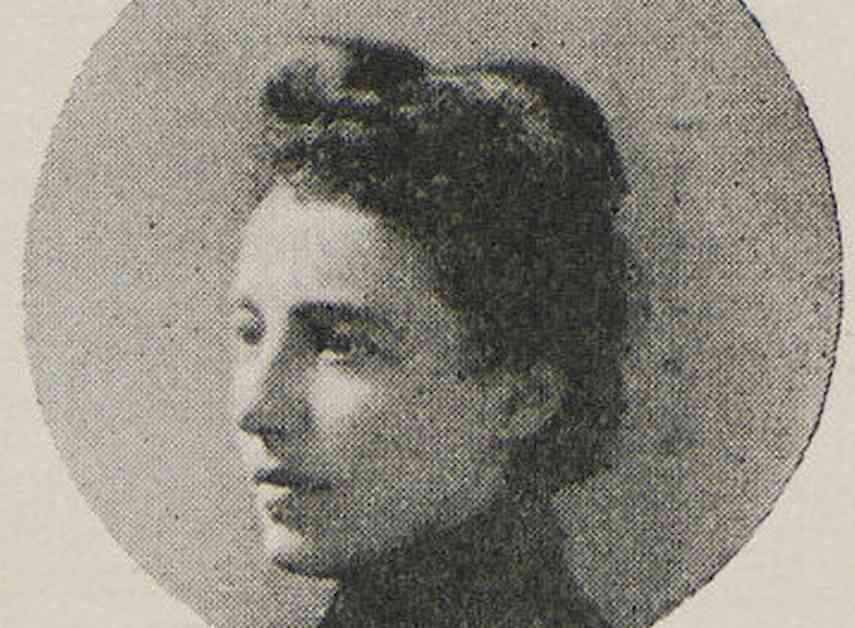Fanny Wilkinson: The Trailblazing Gardener of Red Lion Square
Fanny Wilkinson, born near Manchester in 1855, was a groundbreaking figure in the field of landscape gardening and women’s rights in London during the late 19th century. Graduating from the Crystal Palace School of Landscape Gardening and Practical Horticulture in 1883, she embarked on a career that would leave a lasting impact on the city’s built environment.
Designing the gardens of Red Lion Square, located near Holborn station where Holborn and Bloomsbury intersect, was just one of Wilkinson’s many achievements. This historic London location, created in 1684 by Nicholas Barbon, was the site of various notable events over the years. Before its establishment, Barbon and his team had to fend off over 100 local lawyers who feared their “wholesome air” would be tainted by the new development.
Red Lion Square is also known for being the main entrance to Conway Hall, the headquarters of the Conway Hall Ethical Society, as well as reportedly housing the remains of Oliver Cromwell at one point. Wilkinson’s contribution to the square’s history was a peaceful and enduring one, reflecting her wider influence on the capital.
In a male-dominated field, Wilkinson stood out as the only woman in her Crystal Palace course. Despite the odds, she quickly rose to prominence, becoming an honorary gardener for the Metropolitan Public Gardens Association and eventually the first professional female gardener in England. Her work spanned across London, with her designs gracing public spaces such as Goldsmith Square in Hackney, Myatt’s Fields Park in Camberwell, and Paddington Street Gardens in Marylebone.
One of Wilkinson’s most significant projects was Vauxhall Park, commissioned in 1890 after a campaign led by suffragist Millicent Fawcett and social reformer Octavia Hill. Their collaboration with Wilkinson resulted in a beautiful public space that stands as a testament to their shared vision for a greener city.
Recently, a memorial stone was unveiled in Red Lion Square in honor of Wilkinson, with local resident and actor Tim McInnerny leading the ceremony. The event, organized by the Friends of Red Lion Square Gardens, highlighted Wilkinson’s impact on the community and her enduring legacy as a pioneer in her field.
Reflecting on Wilkinson’s achievements, it is clear that her work transcended mere landscaping. She played a pivotal role in shaping the urban landscape of London, creating vibrant green spaces that continue to enrich the lives of residents and visitors alike. Her dedication to her craft and her passion for creating beautiful gardens have left an indelible mark on the city she called home.
Remembering a Pioneer
The unveiling of the memorial stone in Red Lion Square was a fitting tribute to Wilkinson’s contributions to the community. As friends, colleagues, and admirers gathered to honor her legacy, it was evident that her work had not been forgotten. The ceremony served as a reminder of the impact one person can have on their surroundings and the importance of preserving their memory for future generations.
Looking to the Future
As London continues to evolve and grow, it is crucial to remember the pioneers like Fanny Wilkinson who helped shape the city we know today. Their vision, dedication, and passion for creating beautiful spaces have left a lasting legacy that we can all enjoy. By celebrating their achievements and honoring their memory, we ensure that their contributions are never forgotten.
Embracing Green Spaces
In a bustling metropolis like London, green spaces are essential for providing respite from the urban hustle and bustle. Wilkinson’s work in designing public gardens and parks has helped create oases of tranquility amidst the city’s chaos. By embracing and preserving these green spaces, we can ensure that future generations will have access to the same beauty and serenity that Wilkinson sought to cultivate.
As we reflect on Fanny Wilkinson’s remarkable legacy, let us be inspired by her dedication to creating beautiful gardens and her commitment to making London a greener, more vibrant city. By honoring her memory and continuing to embrace green spaces, we can ensure that her vision lives on for years to come.












